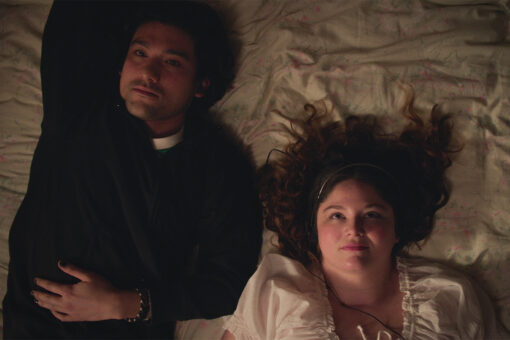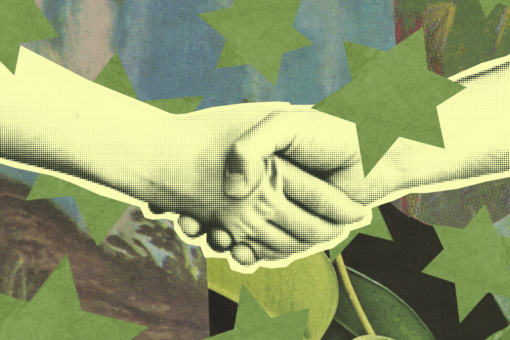When I think about 2012, I think about a lot of things. The ubiquitous handlebar mustaches, the overuse of the word “hipster,” One Direction taking over the world and the fact that “Call Me Maybe” was everywhere. I also remember that it was the year of the 2012 Olympics, which happened to be the very first Olympics that I actually cared about.
Here’s the thing: I love sports. I follow the Los Angeles Lakers and Los Angeles Dodgers with fervor, I will sacrifice my sleep schedule to watch the final moments of an international tennis match and I keep up with cycling (though mainly through familial obligation — my dad’s a fan). But every four years, my regular excitement about sports intensifies and I become a woman obsessed. I am suddenly an expert on any given Olympic sport, depending on the day and my mood. But I am always, always transfixed by gymnastics.
2012 was the summer I turned 12, so I also happened to be somewhat close in age to the youngest competitors at those Olympic games. I created my first email address not long before the games began, and as the USA women’s gymnastics team was competing, I was getting emails from my grandmother. She was wondering if I had seen one of the competitors in the “Fierce Five” do her floor routine to “Hava Nagila.”
The competitor in question is Aly Raisman and the routine is nearly two full minutes long. It opens with two long tumbling passes earning height that would dizzy even the most experienced of viewers. Raisman then crosses the perimeter putting one foot in front of another just like you would if you were actually doing the hora. At around the one minute mark is when the London crowd actually gets into the spirit and claps along to the beat. Raisman adds in other elements, but her two final tumbling passes are where she really shines and cements her legacy as the gold-medal winner for floor in 2012 — and it was all mistake-free.
I remember even at my young age recognizing that Raisman doing her gold medal-winning floor routine to “Hava Nagila” was a big deal, a sort of small act of Jewish pride that could make big waves. Large portions of the world wouldn’t have even recognized that the song was traditionally Jewish if it hadn’t been for a message at the bottom of the screen explaining that “Hava Nagila” was a traditional Jewish folk song. Even with that context, many viewers wouldn’t make the connection that she was doing the routine at the Olympics where, 40 years prior in 1972, there had been a massacre of eleven members of the Israeli national team.
Jewish publications were quick to comment on Raisman’s status as a Jew at the Olympics. Haaretz called her “the official Jewish heroine of the 2012 Olympic Games.” The Forward went with the headline: “Aly Raisman rides ‘Hava Nagila’ to win,” while the Times of Israel blog chose: “Aly Raisman: Our ‘Hava Nagila’ Hero.” These headlines reflect the way that the larger Jewish community perceived her as well. Even at my young age, I was receiving email after email volleying Aly Raisman’s floor routine around. It became a conversation piece for the bubbes; for those that remembered the Munich Massacre, it felt like the Jewish joy the Olympics needed.
It has now been about 12 years since the routine, and I still think about it all the time. There are other iconic Olympic gymnastics moments: Kerri Strug’s crucial vault on an injured ankle comes to mind, along with Simone Biles’ first Olympic floor routine in 2016 and McKayla Maroney’s vault that should have been a 10 (but wasn’t!). But for me, Aly Raisman’s floor routine will always be the most iconic thing to ever happen at the Olympics.
It’s no longer news that antisemitism is rising, and many Jews are now treating it as a fact of life. For me, our current climate makes it even more obvious that Aly Raisman’s floor routine will be living rent-free in my head forever. It felt (and continues to feel!) like the perfect example of what it means to be an American Jew. She’s competing for the United States, but she’s doing the routine to a traditional Jewish folk song — one that’s been passed down for generations. For 12-year-old Rachel, preparing for her bat mitzvah and trying to figure out what role Judaism will play in her life moving forward, I thought it was cool that she could do flips and that the song that we would be dancing to at the aforementioned bat mitzvah was being played a world away in London. For nearly 24-year-old Rachel, preparing to become an absolute expert of all Olympic sports as we kick off the 2024 games, I’m still dancing the hora with pride. I still feel awe and gratitude that Aly Raisman — at only 18! — chose the song and broadcast her Judaism with her whole heart on the stage.
I still can’t get it out of my head.



